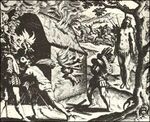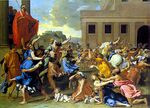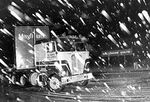Evansville
“I may as well have been in Prague.”
| Evansville, Kentucky | |
|---|---|
 As dirty as the river that flows by, downtown Evansville has been the inspiration for several memorable suicide leaps. This area is currently undergoing a revitalization effort with the stated aim to attract an off-brand outlet mall and a Sbarro. | |
| Motto: "Provincialism ain't just a state in Canada!" | |
| Civic anthem: "Let's Hear it for the Boy" by Deniece Williams | |
| State | Kentucky |
| Official nickname | Evansfail |
| Official language(s) | Hoosier Twang |
| Mayor | Apple, the Wise Elf-King |
| Established | 1812 |
| Re-Established | 1819 |
| Re-Re-Established | 1847 |
| Opening hours | 8:00 am |
| Dialing code | 812 |
Evansville, Kentucky became the third largest and only city in Kentucky north of the Ohio River on June 8, 2010 following Indiana's victory in the Two Days War. As a condition of its unconditional surrender, Kentucky was forced to accept the spirit crushing town as its own. While some in the Hoosier State wept for joy, most everyone else were surprised to learn that Evansville was not already in Kentucky.
Early History[edit]
Settled by native United Statians almost 200 years ago, Evansville is nestled along the banks of a big ditch that carries the wastewater of Louisville, Cincinnati, and Pittsburgh. As testament to their retardedness and desire to be a difficult people, the early French explorers named the big ditch "La Belle Riviere", knowing full well that United Statians don't speak French. On March 27, 1812, a drunken backwoods bootlegger named Hugh McGary, Jr. wrecked his flatboat going into a high-banked left-turn in the river. The spectacular scene was cheered by the onlooking Indians, but in his compromised state, McGary, Jr. mistook their howls of approval for self-righteous taunting and proceeded to kill them all. Fearing he may have to pay a small fine for his latest faux pas, McGary, Jr. changed his name to Robert Evans in order to throw the Feds off his trail and named the Indian settlement that he took over "Evansville" after himself like many other jerks of his day.
In the early afternoon of February 30, 1822, a steamboat carrying the first load of coffee to Evansville arrived at the city wharf. After a few cups of the dark-roasted goodness, Evans' black cloud of drunkenness lifted for the first time in nearly two decades. Enjoying neither the sobriety nor the situational awareness that followed, Evans decided it best to relieve the city's treasury of its cumbersome accumulation of money and set sail for South Missouri under cover of darkness.
Later Early History[edit]
With Evans out of the way, the coast was clear for new groups of hooligans, crooks, and lawyers to fill the political vacuume. Having previously been the county seat for Warrick County, the self-absorbed warlike citizens of Evansville managed to piss off enough of their neighbors that the state government had to step in and separate the two, creating a new county for the pesky hilljacks to get their grubby little mitts on. Intoxicated with what they considered to be a monumental victory, the blood-thirsty inhabitants next turned their attention to their slower-thinking neighbors on Evansville's western border. On a steamy August night in 1857, a throng of rabid Evansvillains marching under the banner of The Consolidation Crusaders crossed First Avenue intent on subjugating the peaceful city of Lamasco. Despite their pleas for mercy, the Consolidationists laid waste to their homes, stole their women, burned their horses, and established a tax increment financing district. In years to come, the successors of this early Consolidationist group would use similar mob tactics to confiscate other nearby communities such as Independence, Howell, and Stringtown, thus creating a citizenry with a pervasive defeatist attitude.
Meanwhile, some rich folks thought they could get richer if they created an inland waterway from New York to New Orleans. As a part of their scheme, they began construction of a canal south from Lake Erie towards Evansville. Upon reaching the terminus, the builders fled in panic, believing they would actually have to interact with the native population. As a result, the canal never reached the river, the project failed, bond holders rioted, and Evansville would forever be ignored for future transportation improvements.
Early Later History[edit]
In keeping with the tradition of taking things that don't belong to them, the city fathers at the turn of the 20th century decided that Evansville needed an overpriced institute of higher learning to call their own. Not being smart enough to establish their own school, the Evansville City Council issued a declaration of war against the sleepy little town of Moores Hill in Southeastern Indiana near the Ohio border.


